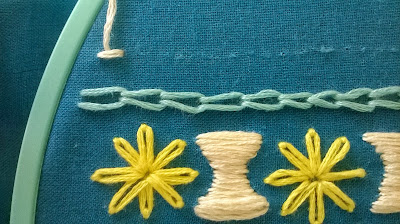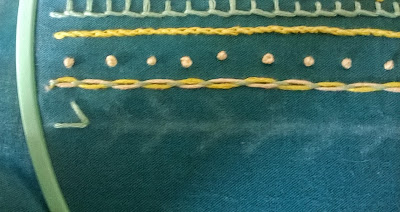First, enter 1/2 inch away from the beginning of the line.
Exit at the beginning of the line, but do not pull through.
Reenter where you began.
Point your needle where you exited in step 2 and twist the floss around it about ten or twelve times. (Sorry the pictures are so blurry!)
Pull your needle through, making sure to run your fingers up and down the working thread to make sure that there are no knots. (TIP: pull out the thread that is not the working thread)(the lazy thread)(quickly. It will make it much easier to pull through.)
Tighten.
Exit right under where your string protrudes.
Tighten.
To save thread, enter instead this time next to the right side of the previous bullion knot, and embroider it the opposite way. Honestly, you could have began at the beginning of the line the first time - it makes no difference.
To continue, go back and complete steps 1-8.
Here is the completed line of bullion knots.
-Avamae



















































